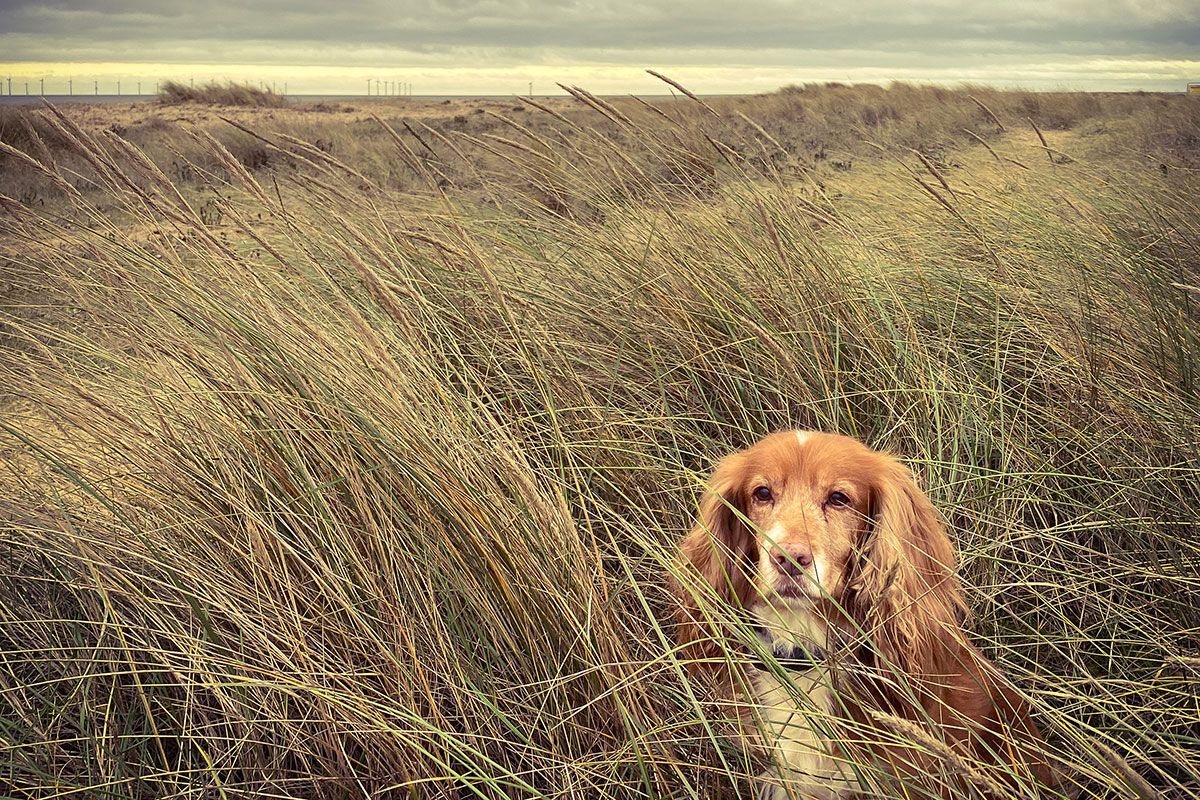Grass Seeds and Dogs: The Hidden Hazard in Your Garden and Beyond
It was a warm June evening when Sarah watched her spaniel, Rosie, bounding through the tall grass near their Essex home. Rosie loved nothing more than exploring wild meadows, ears flapping and tail wagging. But just a few days later, Rosie began frantically pawing at her ear and shaking her head. A trip to the vet revealed the problem: a tiny grass seed lodged deep in her ear canal — painful, invisible, and surprisingly common.
For many dog owners across the UK, this story hits close to home. Grass seeds in dogs are an often overlooked but serious seasonal hazard.

The Threat of Grass Seeds for Dogs
Grass seeds, also known as awns or foxtails, are barbed, needle-like seeds that can easily attach to a dog’s fur. Their pointed shape allows them to burrow into the skin and body — often with distressing consequences.
Between June and September, vets report a sharp rise in grass seed-related injuries. A study published in Veterinary Parasitology found a 176-fold increase in grass awn inhalation cases during the summer months. Another study from the British Small Animal Veterinary Association noted that 90.6% of cases occurred in this seasonal window.
These seeds may seem harmless, but they can:
-
Penetrate the skin, often between toes or in armpits
-
Enter ears, causing intense irritation or infection
-
Become lodged in eyes or noses
-
Migrate deeper into the body, even reaching lungs in rare cases
The Human Cost
Beyond the physical pain for dogs, there’s a real emotional and financial toll for owners. Vets often need to sedate dogs to locate and remove seeds. In some cases, surgical intervention is required. Treatment costs can vary widely — from £60 for a simple ear removal to over £800 for more invasive procedures.
For many owners, it’s not just about the money. It’s about watching a beloved pet suffer, the worry of a mysterious illness, and the helplessness of not knowing what’s wrong. As Rosie’s owner Sarah put it, “She’s part of our family. Seeing her in that much pain over something so small was heartbreaking.”
Know the Signs
If your dog has been out in long grass, keep an eye out for these common signs of grass seed trouble:
| Area Affected | Symptoms |
|---|---|
| Paws | Limping, licking, swelling between toes |
| Ears | Head shaking, scratching, bad odour |
| Eyes | Redness, squinting, discharge |
| Nose | Sneezing, pawing at the nose, bleeding |
| Skin | Swelling, pus, small puncture wounds |
Prevention: Your Best Defence
While grass seeds can’t be completely avoided, you can reduce the risk significantly:
-
Check your dog thoroughly after walks — especially between toes, in ears, and under armpits.
-
Keep the fur trimmed, particularly around high-risk areas.
-
Stick to mown paths and avoid tall, dry grass in late spring and summer.
-
Be proactive — if your dog shows signs of discomfort after a walk, get them checked promptly.
How Poop Patrol Can Help
At Poop Patrol, we understand that a tidy outdoor space isn’t just about aesthetics — it’s about safety. Our team supports homeowners across Essex with:
-
Garden clearance services to remove long grass, weeds, and seed-producing plants
-
Regular garden maintenance to keep grass short and safe during peak seed season
-
Advice on turf care and lawn design to minimise hazards for your dog
We help create dog-friendly gardens that offer freedom and fun — without the hidden dangers.
Grass seeds may be tiny, but their impact on dogs can be enormous. A simple walk through overgrown grass can lead to pain, infection, or even surgery. With a little vigilance, proper grooming, and a safe outdoor space, you can protect your furry companion from this common seasonal risk.
Is your garden truly safe for your dog this summer?
Contact Us
If you need assistance in keeping your garden manageable to avoid problems associated with grass seeds and dogs, simply give us a call on 0800 148 8088, or complete the form below: